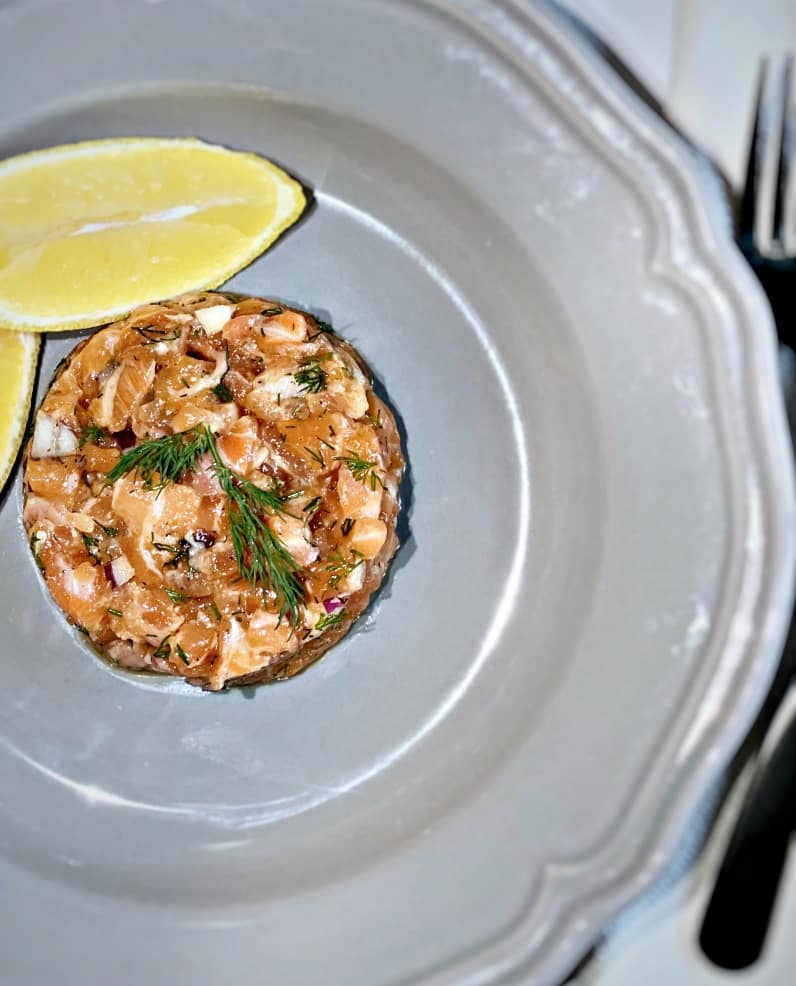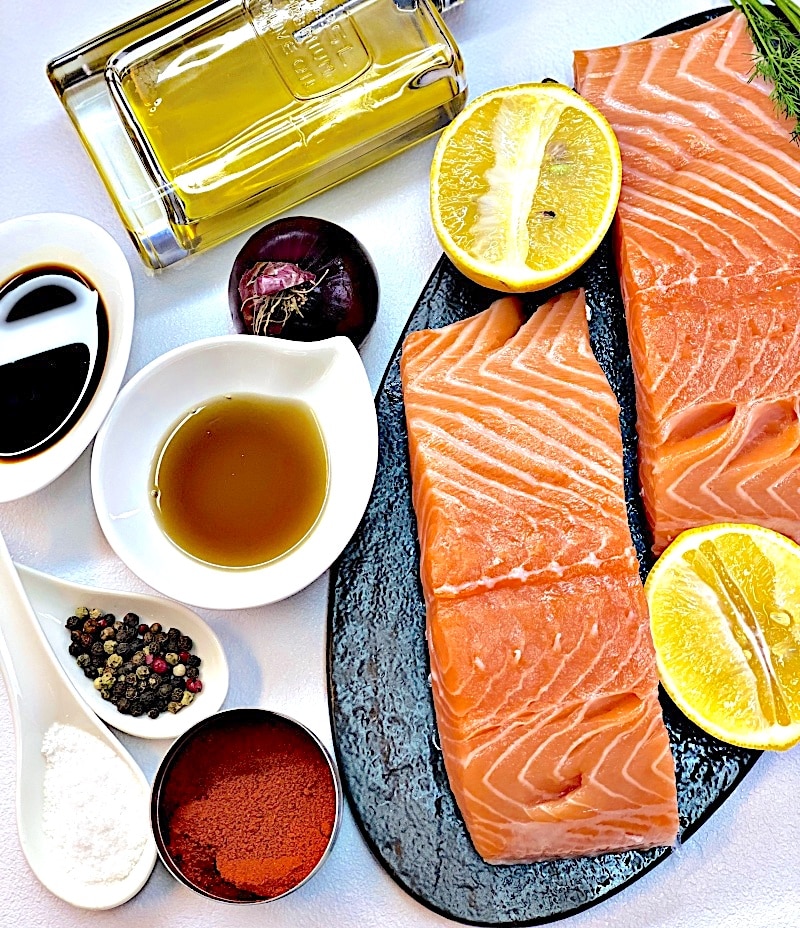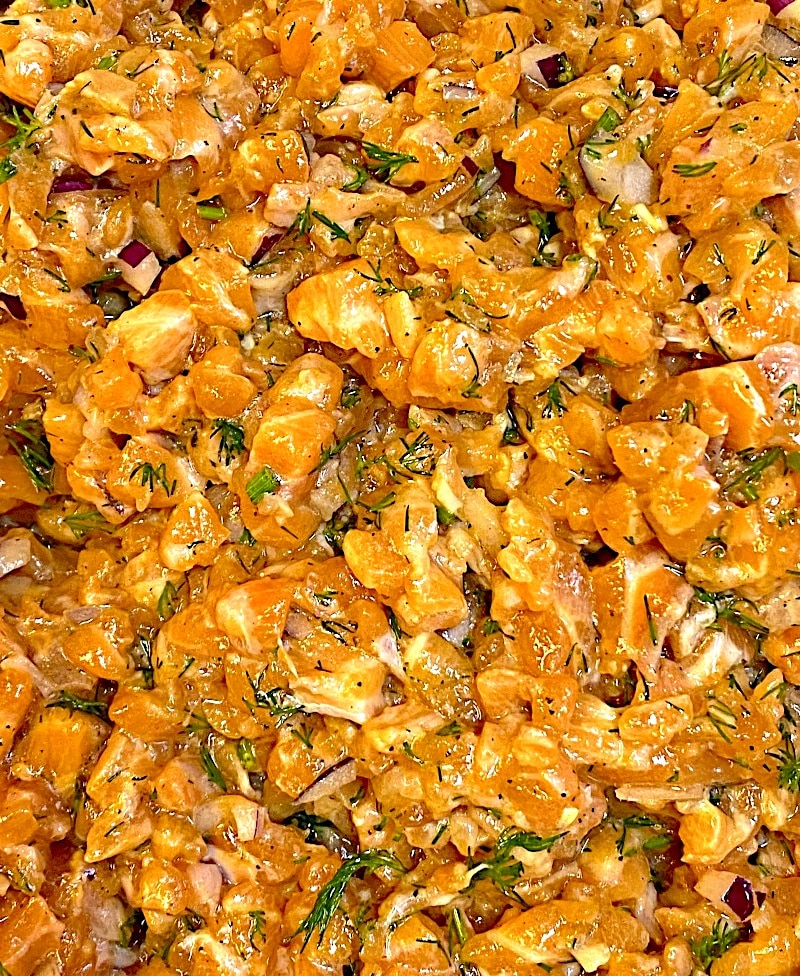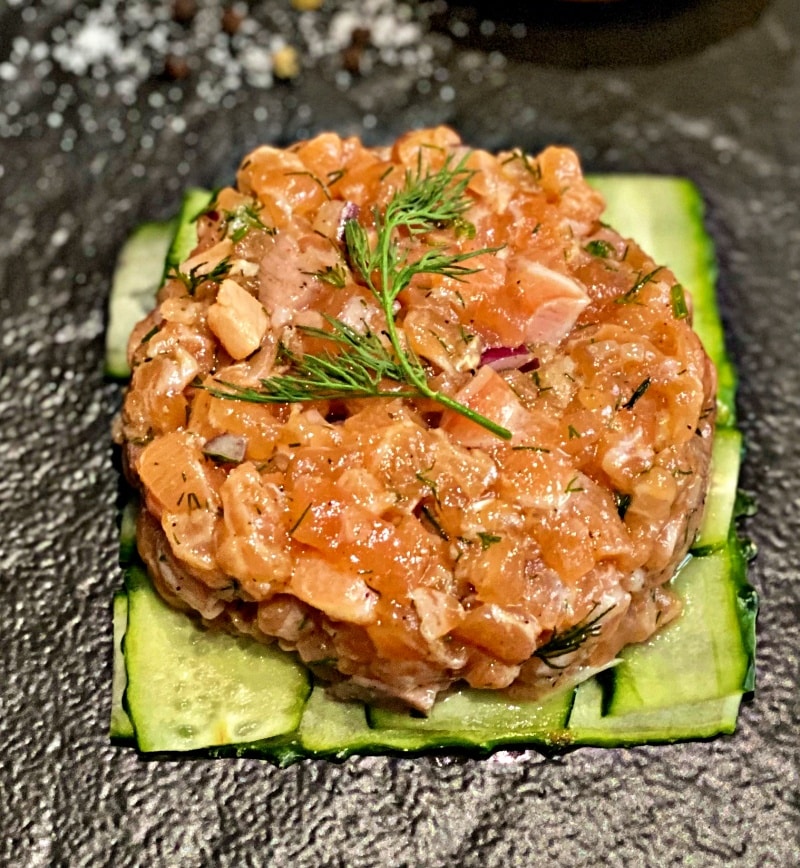This recipe doesn’t need much of an introduction. It is all about controversy and temptation. Salmon tartare is simple yet sophisticated; it is a fine, still a fragrant recipe with an impressive appearance and a bespoke taste. It is the mouthwatering collection appetizer to suit all occasions.
Salmon is a fish rich in nutrients like Omega 3 and it has a special copious taste. For that reason, salmon is a key ingredient in many recipes. Cookbooks and internet cooking sites share lots of recipes you can choose from on how to cook salmon. You can prepare salmon salads, grill it, bake salmon in the oven, smoke it, and even salt it like the Scandinavians do. Or, follow my today’s recipe and prepare a dish that any food connoisseur appreciates it raw – the dangerously delicious salmon tartare.
Salmon Tartare – Tempting and Risky
When it comes to tartare, the meat involved is always thermally unprocessed. Yes, my friends, it’s raw meat and it’s delicious. The fact that you are about to prepare and eat raw fish imposes an extra dose of responsibility. Therefore, make sure you choose the freshest salmon you can get. If you’re in doubt about the duration of the salmon being exposed on the market shelves, leave it for another time. I do understand that a topic like food-borne germs and diseases is something you don’t want to read on a food blog. However, you need to be informed of the risks associated with consuming raw stale salmon. It may contain parasites that cause serious illness in humans.
Take full advantage of salmon’s gastronomic qualities but always pay attention to the quality of the meat. It is imperative to know how to distinguish fresh salmon from bad salmon.
How to Choose Fresh Salmon
Texture and skin. Fresh salmon should have a firm texture, without any imperfection. If the skin is sticky or/and the scales fall off quickly – don’t buy it.
Smell. The odor of the salmon, or any fish in general, is a very good freshness indicator. The smell of fresh salmon should be salty and slightly sweet. If, on the contrary, it has a strong fishy smell, then it is not fresh anymore.
Firmness. It is a well-known trick cooks use to check the quality and freshness of meat and fish. Gently press the fish to see if the portion under pressure of the finger returns to its original shape. In this case, it means that the fish is still fresh.
When buying an entire fish. The gills are an index telling you if you shall or shall not buy the fish. A fresh salmon should have pinkish to reddish gills. Also, the cavity must be clean, without traces of blood or other liquids. Also, check the fish’s eyes. They must be clear and rounded. Avoid purchasing fish that has cloudy eyes. That means it has been caught a long time ago, too long for it to be transformed into a good tartare.
Ingredients for Salmon Tartare
Salmon tartare has a wide variety of recipes, all influenced by different cultures. My salmon tartare recipe is easy to make and I find it the most delicious of all. To feed 6 people you will need 500 grams of raw salmon, without bones and skin, of course. Some people add smoked salmon to the fresh, I don’t do that, I like the finesse of the fresh meat.
It is a well-known thing that dill goes perfectly to salmon. You will need 4 tablespoons of freshly chopped dill. Olive oil, black sesame oil, soy sauce and lemon juice – these four incredibly aromatic and delicious ingredients will set the tone of the tartare. Use lemon juice because it has an antibacterial effect and it somehow “cooks” the salmon. You will see that it changes color after the acidic juice is being added. Also, you’ll need one medium red onion to open up the taste. Can’t go without salt and pepper.

How to Prepare Salmon Tartare?
Wash well the fish, then tamp it down with a paper towel. Make sure you take out all the bones, you can use tweezers for that. Cut the sides of the belly, it is very fatty meat and does not go well with tartare. Depending on how you like the tartare, cut the salmon into smaller or larger cubes. Use a well-sharpened knife. I know for sure I like the tartare finely minced, however, be careful not to turn it into a puree.
Tips:
- You may use the belly part of the salmon to make fish stock. You may freeze the stock and use it whenever you need it.
- Try to lightly freeze the salmon prior to making the tartare. About 20-30 minutes in the freezer is enough to partially freeze the salmon. It is easier to mince the meat when it doesn’t slip through.
Peel the onion and run it under water along with fresh dill. Finely chop the red onion and the dill then add it all over the salmon.
Season with olive oil, sesame oil, lemon juice, salt, and pepper. Mix well. The smell should already be more than inviting. Allow the mixture to rest for 10 minutes so that all ingredients blend. That would be it.
How to Serve Salmon Tartare?
Serve this fresh and delicious food in ramekins or use a metal circle to place the goodness on the plate. Salmon tartare is normally served as a starter, at the beginning of the meal. I recommend associating the salmon tartare with a white (or rose) dry or semi-dry wine. Avoid with confidence any sweet or red sweet wines as not to dampen your papillae. The combination of dry white wine and salmon tartare will stimulate your appetite. Thus, your interest for the next festive dishes will be declared open.
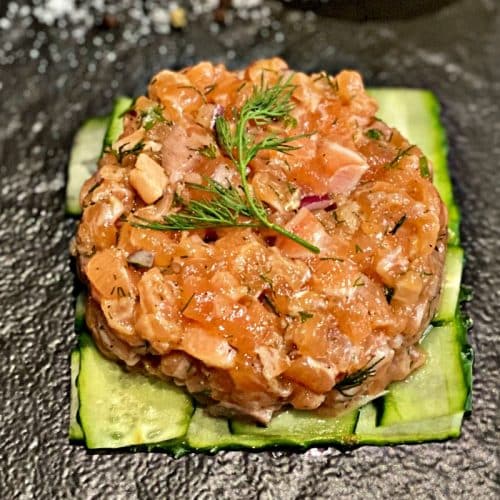
Dangerously Delicious Salmon Tartar
Equipment
- Food ring mold
Ingredients
- 500 g salmon
- 1 medium red onion
- 4 tbsp fresh dill
- 2 tbsp olive oil
- 2 tbsp sesame oil
- 2 tbsp soy sauce
- 2 tbsp lemon juice
- 1/2 tsp salt
- 1/22 tsp pepper
Instructions
- Wash well the fish; absorb excess water with paper towel
- Cut the sides of the belly, it is a very fatty meat and does not go well with tartare
- Finely mince the salmon
- Peel the onion and run it under water along with fresh dill. Finely chop the red onion and the dill
- Add onion and dill to the salmon
- Season with olive oil, sesame oil, lemon juice, salt and pepper. Mix well
- Allow the mixture to rest for 10 minutes so that all ingredients blend
- Use food ring mold to place tartar on plate, or serve tartar in ramekins
